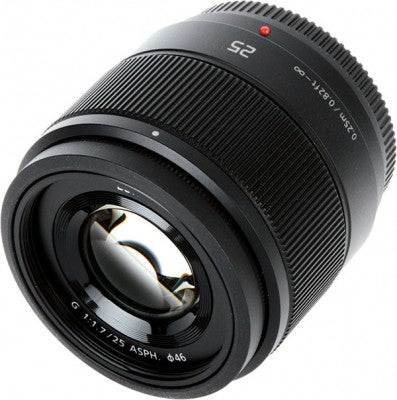Andy Westlake puts an inexpensive fast normal prime lens for Micro Four Thirds cameras to the test.
Panasonic Lumix G 25mm f/1.7 Asph review
Panasonic Lumix G 25mm f/1.7 Asph – Image quality
I tested the Panasonic 25mm f/1.7 on several Micro Four Thirds bodies, including the Panasonic Lumix DMC-GM1 and Olympus OM-D E-M5 II. In general, I found it to be a pretty accomplished performer, giving attractive images that belie its bargain price.

With its fast maximum aperture, the 25mm is good for shooting indoors in low light
At f/1.7, images are a little soft when examined at the pixel level, but stop down to f/2.8 and they gain noticeably more bite. Sharpest results are generally obtained around f/4-f/5.6, and stopping down further sees diffraction progressively reducing pixel-level crispness; personally, I’d never use an aperture smaller than f/11. It’s important to understand that this isn’t a defect, but an inevitable consequence of optical physics. With smaller sensor formats such as Micro Four Thirds, you simply shoot at larger apertures than with full-frame or APS-C cameras. So if you’d normally use f/8 on full frame, the rule of thumb is to shoot at f/4 on Micro Four Thirds.
Panasonic has adopted its usual approach of correcting distortion in software, and in practical use you’ll have to go out of your way to get anything other than perfectly square images. Likewise, vignetting is too low to be noticeable in most real-world use. Some green and magenta fringing can be visible in out-of-focus areas of the frame at larger apertures, but it’s not overly distracting. If you use the lens on older Olympus bodies that can’t correct lateral chromatic aberration, you’ll also see minor green and magenta fringing towards the edges of the frame, but again it’s not very objectionable.

The lens’s main flaw is the appearance of multi-coloured flare when shooting into the light
Out-of-focus backgrounds are in general drawn relatively attractively, thanks in part to the lens’s circular diaphragm. In fact, the lens’s main flaw is when shooting directly into the light, where strong veiling flare can cover much of the frame. In fairness, though, this isn’t unusual with fast primes.





